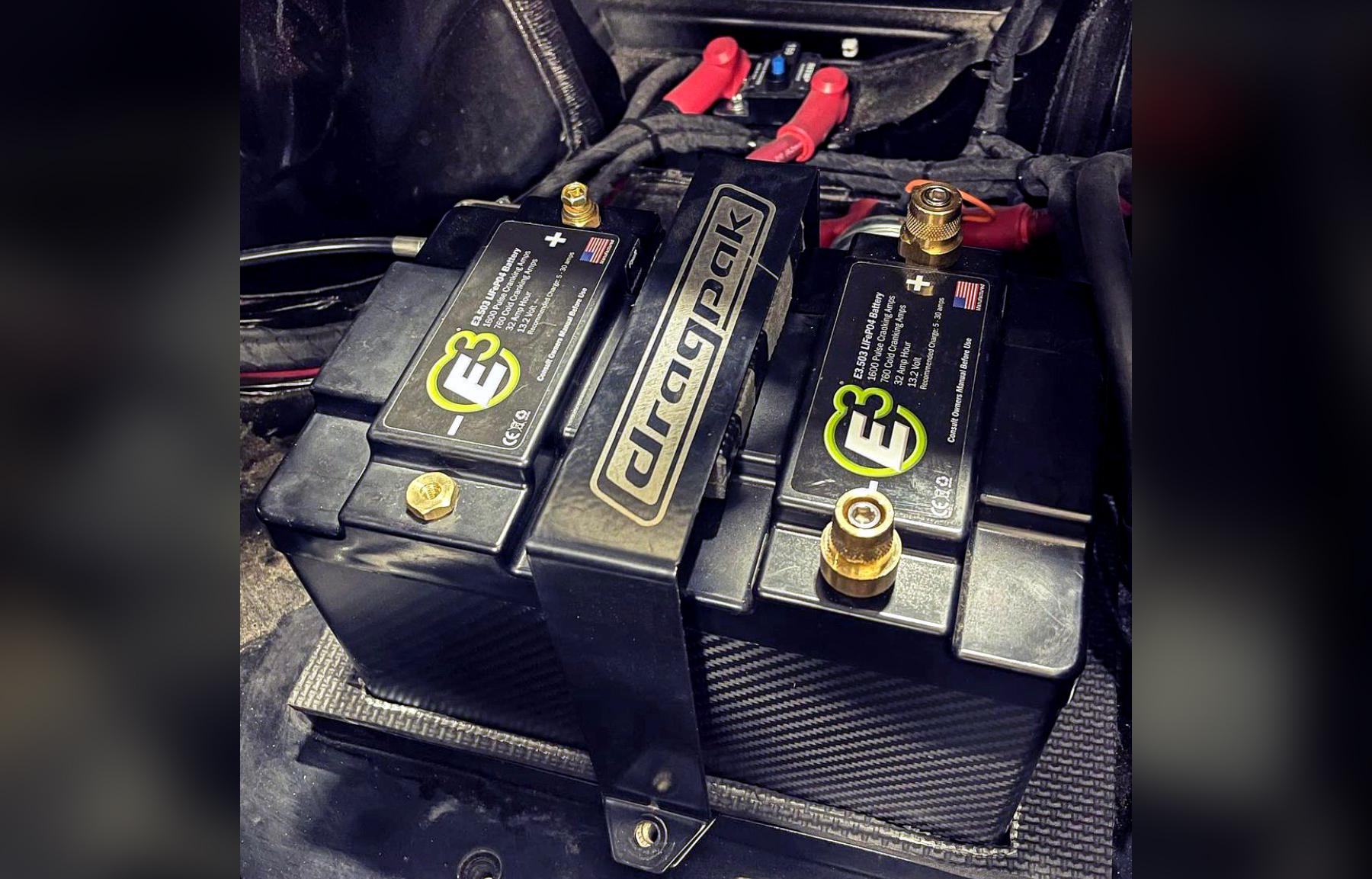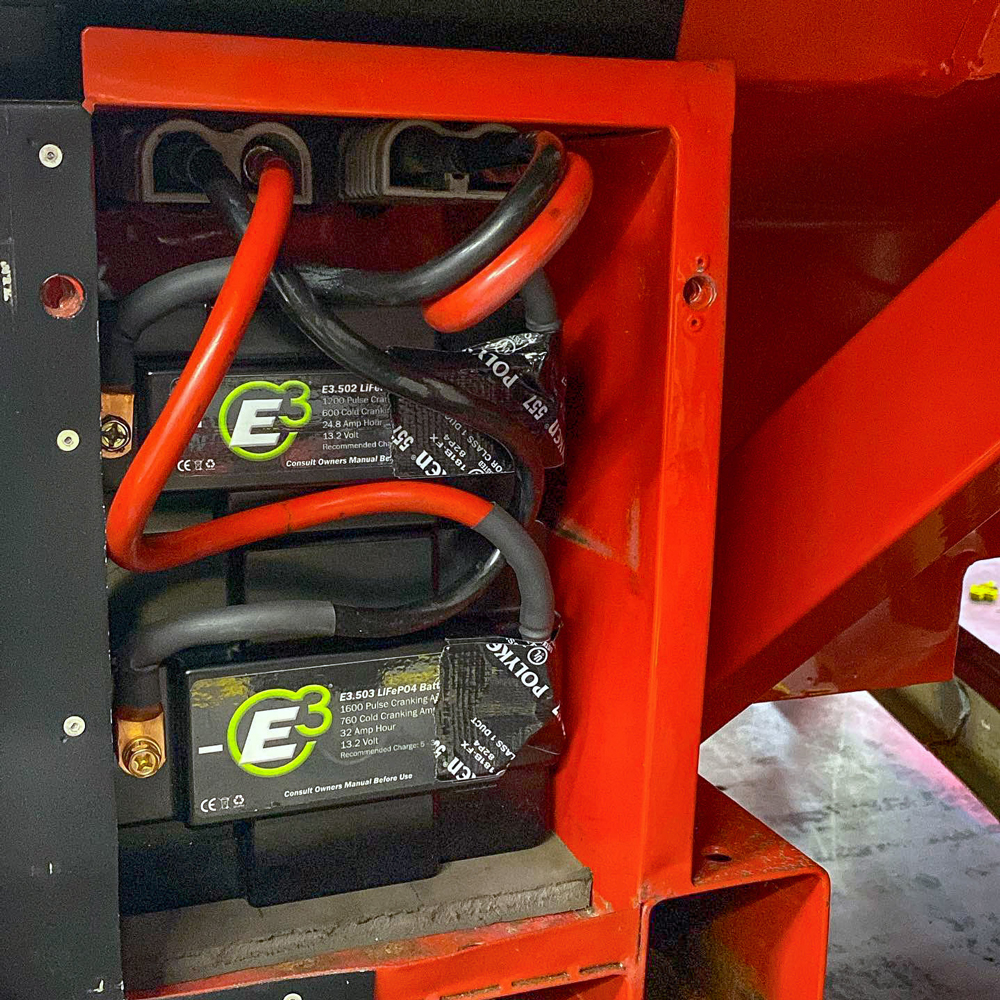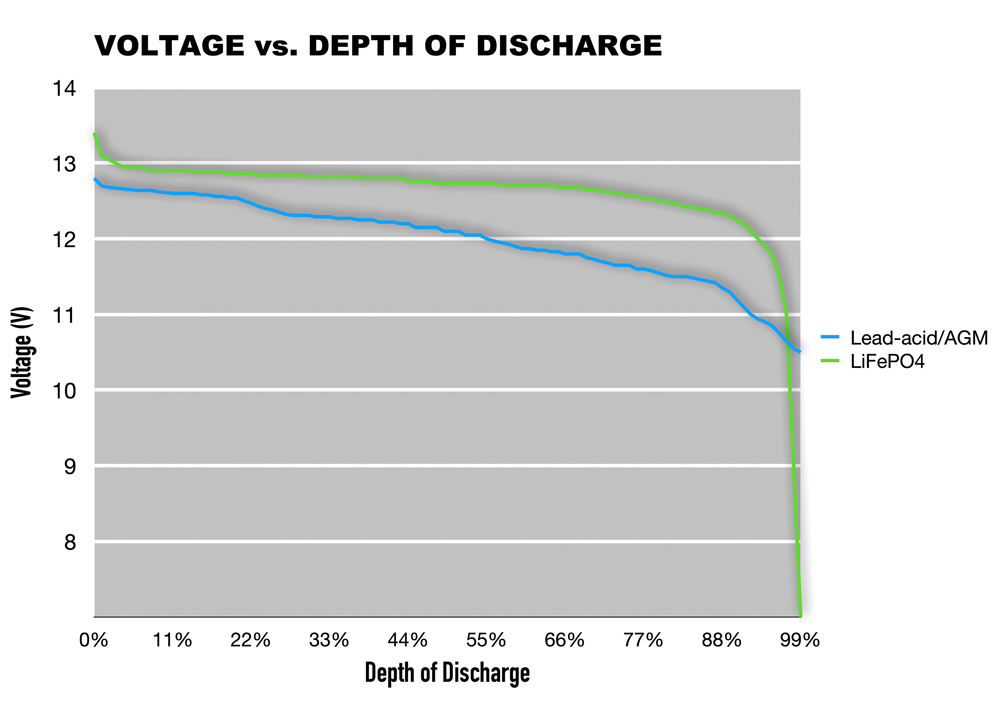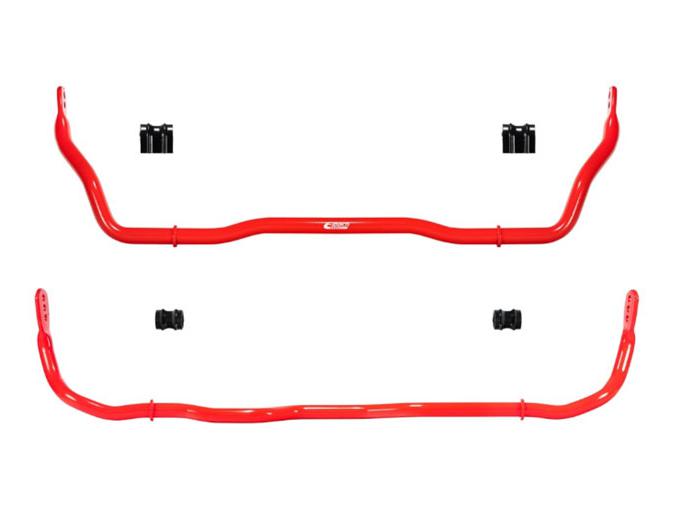PRI Tech: Lithium Battery Considerations

A major benefit of a lithium battery over traditional lead acid or absorbent glass mat (AGM) batteries is lighter weight. Lithium iron phosphate (LiFePO4) batteries are so light that, in many instances, two are still half the weight of one lead acid or AGM battery.
Is a lithium battery the right choice for your race car? What you need to know before making the switch.
A critical but often overlooked component in any race car is the battery. While racers have been using lead acid and absorbent glass mat (AGM) batteries for decades, with advancements in lithium technology, more lithium batteries are coming to market.
Traditional wet cell lead acid, AGM, and lithium all have their pros and cons, therefore choosing the right battery for your needs is critical to the performance and longevity of your battery. The key items to consider when shopping for a battery include:
- Cranking power
- Size and weight
- Amp hour capacity
- Battery Management System (BMS)
- Types of lithium
Lithium is significantly more energy dense than lead acid, which means you can pack a lot more cranking power in a smaller and lighter package. Most customers are accustomed to using cold cranking amps (CCA) as the metric for how “strong” a battery is. CCA, however, is the measure of a battery’s ability to crank for 30 seconds at -17 degrees C. Unless you’re racing in below freezing temps like that, you’ll instead want to focus on pulse (or peak) cranking amps (PCA). This describes the max output of the battery at 25 degrees C (or 77 degrees F), which better represents most racers.
The typical 602 and 604 crate engine requires about 1,000 amps of cranking power. As you start moving up in displacement or compression ratio, you’ll need to move up in cranking power. For engines with compression ratios higher than 13:1, you’re going to need 1,200 or more cranking amps. Remember, more cranking amps are required to spin over a larger motor or push through the resistance of higher compression. Another benefit of lithium over lead acid is that it delivers that cranking power faster, meaning your engine will start easier and more consistently.
Amp Hour Capacity
Once you know how many cranking amps you need for your engine, you can start looking at size and amp hour (Ah) capacity. A huge benefit of lithium over lead acid is lighter weight. As an example, the E3.502 lithium battery weighs 80% less than the equivalent cranking amp AGM battery. From an Ah capacity standpoint, this is where it is important to size the system not only for your current setup but slightly over it, leaving room for future upgrades and modifications to the car.
A key difference between lead acid/AGM and lithium is the amount of usable Ah capacity due to voltage drop. Lead acid/AGM batteries have approximately 50% usable capacity at 12V, whereas lithium batteries have roughly 90–95% usable capacity.

A 50 Ah AGM battery only has 25 Ah at 12V. Once the battery drops below that, problems arise. Fuel injectors don’t spray consistently, cooling fans and fuel pumps begin running slower, all of which hurt performance. A lithium battery that’s rated at 32 Ah has around 30 Ah of usable capacity. When comparing specs, at first glance a 50 Ah AGM seems like it has more capacity than a 32 Ah lithium, but it’s actually the opposite.
For instance, on a dirt late model application that is carbureted with minimal electronics beyond a cooling fan and gauges, you don’t need a lot of Ah capacity. However, a fuel-injected drift car with multiple cooling fans, data acquisition, driver cooling suit, and so forth will need more capacity to keep up with the electrical loads.
This is even more important for those not running an alternator. A common mistake we see racers make is going for the lightest battery without considering the cranking and load requirements for their application. This not only creates the possibility of draining the battery dead or not starting the engine but overstressing the battery and reducing its useful life.
Deep cycle batteries offer a deeper draw than traditional lead acid/AGM however this deep draw still reduces number of life cycles. Lithium batteries can be drawn to near zero without impacting cycle life.
Safety and Longevity
This brings us to charging. Lithium batteries do require a lithium-specific charger for off-vehicle charging. Most standard automotive alternators will charge your lithium battery without issue, but you’ll want to consult each battery manufacturer’s recommendations before installing. For example, E3 Lithium starter batteries have a maximum alternator charging input of 160A. To get the longest life out of your battery, you’ll want to keep it on a maintainer when not in use. Never leave a battery deeply discharged, as this will damage the cells and reduce life.
There are many different types of lithium chemistry being used in batteries, including lithium ion (Li-Ion), lithium polymer (LiPo), and lithium iron phosphate (LiFePO4). LiFePO4 is significantly more stable than Li-Ion and LiPo, making it the safest option. It is also more energy dense, making it ideal for race battery applications.

In addition to using a stable chemistry such as LiFePO4, you want to be sure the battery is equipped with a battery management system (BMS). The BMS is a circuit board that provides a wide variety of features such as short-circuit protection, over-charge/discharge protection, and overheating.
One of the most important features of a BMS is cell balancing. Lithium batteries are built using multiple cells, and these cells need to stay balanced. If there is a mismatch in cell charge, the entire battery will have lower usable capacity. Suppose that once the battery is charged, one cell is short by 5%. The entire battery will not be able to fully discharge that remaining 5%, so cell balancing is critical to the longevity of your lithium battery.
The complexity of the BMS varies by manufacturer, so be sure that the battery you’re considering has all the features you’re looking for.
While shopping for a battery can seem pretty straightforward, making the switch from lead acid/AGM to a lithium battery can get complicated. Don’t hesitate to reach out to the manufacturer directly to help answer all your questions and help size your setup appropriately. P
Chris LaCouture has been the Director of Engineering at E3 for 13 years, working in areas such as quality control, design, manufacturing, racing, and more. He graduated from the University of North Florida with a Bachelor of Science in Mechanical Engineering. LaCouture is the in-house technical expert at E3 and is currently helping design some of their batteries that will be on the market in the near future.
 MEMBERSHIP LOGIN
MEMBERSHIP LOGIN JOIN PRI
JOIN PRI


